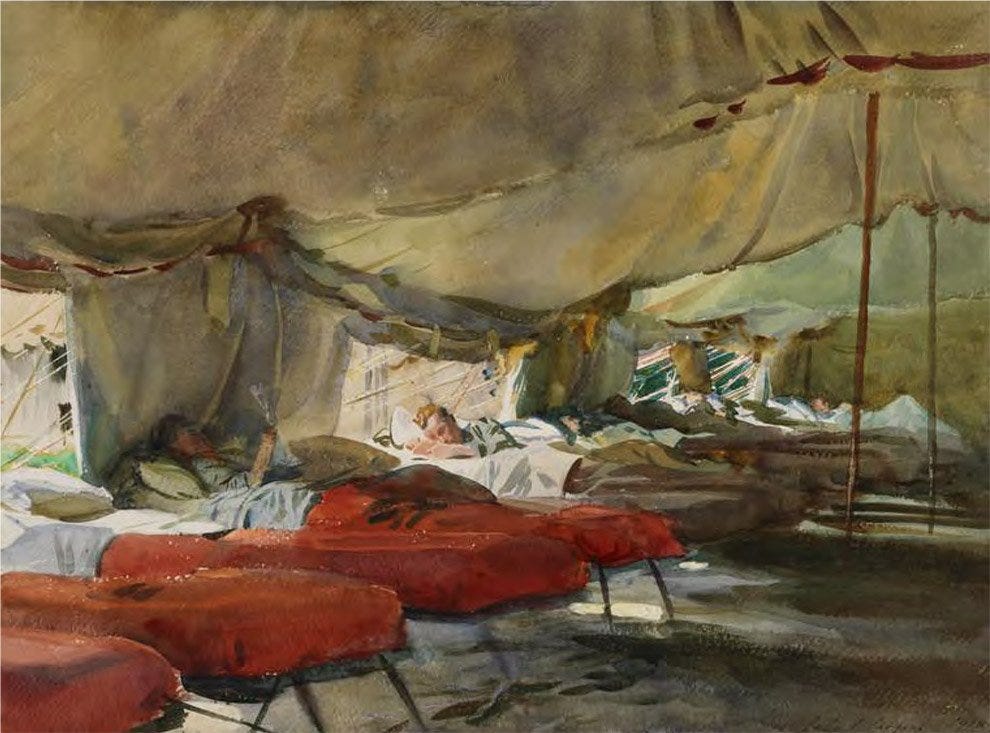Making art out of disaster
How the Spanish flu infected art
🏷️ Categories: Creativity, Art, History
“Your worst enemy was your own nervous system. At any moment the tension inside you could translate into some visible symptom.“
~ George Orwell, 1984.”
In times of despair, art has been an escape valve amidst all the misfortune, a mechanism for artists to forget the illness and suffering outside. Human history is full of ups and downs and both good and bad times have left an indelible mark. Today we will travel back in time to see what mark a past pandemic left on the art of an author you didn't know was infected. Anyone can get infected, viruses know no status, age, color or gender, only people.
Self-portrait of the disease
The Spanish flu pandemic hit Europe between 1918 and 1919 and left a tremendous mark on the society and culture of the time. Edvard Munch, known for his iconic work “The Scream”, also contracted the disease, but was able to live to tell the tale (unlike other artists such as Klimt, Schiele, Apollinaire and more...).
Thanks to his good health, despite being 56 years old, he managed to overcome the disease and not fall by the wayside. These were hard but prolific times, instead of getting discouraged, Munch began to portray himself as a way of reflecting on the situation he was in, in a dialogue with himself (Prelinger, 2002).

In the left picture we see him at his most vulnerable stage, locked in his room, convalescing from illness. He is seated on a wicker chair, wrapped in a robe, emaciated and pale. His brushstrokes convey loneliness and suffering. The blurred eyes and open mouth hint that he was having trouble breathing.
On the right we have the second work, a year later, after having overcome the disease. There is no longer a wicker chair or house clothes, his beard is bushy and he wears a suit. However, his face and eye color show that he is still in the shadow of the disease, as if he had sequels.
Sick and at war
If an epidemic is tragic, add a war. In 1918, while Munch was confined to his room in anguish and illness, the artist John Singer Sargent would have an unexpected and similar fate. Sargent traveled to the front lines with the goal of painting the British and American armies in World War I. However, he fell ill there with the flu. However he fell ill there with Spanish flu and ended up bedridden in a field hospital along with war wounded and flu sufferers (Chorba and Breedlove, 2018). He went to paint the war and ended up painting the disease in the first person.
It is a painting that combines two of the worst events of humanity, diseases and wars. Under a khaki canvas, soldiers lie prostrate. If you look closely, you will see that there are red and brown sheets, this is not accidental, it is because this is how the sick with flu were distinguished from the wounded at the front.
We are not so far away from the Covid-19 pandemic of 2020. How will the Covid-19 pandemic influence the artistic vision of the 21st century and how will it be remembered in art history books? If you are interested in this topic, I recommend Infect-arte, a book by Crego et al., (2017) that rightly explores the relationship between art and disease.
In short, death has always terrified human beings and this fear has been shown through art. This is just one story about how humans manage to make art out of disaster.
✍️ Now it's your turn. Today's letter was a somewhat different topic, did it interest or inspire you? Did you know that the painter of “The Scream” had suffered from the Spanish flu? Share it with friends if you found it interesting.
📚 References.
Crego, A. M., Santos, Y., Seoane, R., & Seoane, S. P. (2017). Infect-art.
Chorba, T., & Breedlove, B. (2018). Concurrent conflicts: the Great War and the 1918 influenza pandemic. Emerg. Infect. Dis. 24, 1968-1969.
Orwell, G. (1949). 1984.
Prelinger, E. (2002). After the Scream: The Late Paintings of Edvard Munch (New Haven: Yale University Press).






We are still in the pandemic, despite our governments and many people around the world doing their best to ignore it, while witnessing genocides in Congo, Sudan, and Palestine. It’s upsetting to see historical cycles repeat themselves like this as we learn nothing from the past. I think future generations will look back at the way we responded to the pandemic and shake their heads at the ways we could’ve prevented spread and eradicated the disease instead of letting it rip. I hope they learn from our mistakes and do better for each other.
While I've heard the names of these artists, I knew nothing about them. The time period you covered is especially interesting because it so closely parallels our own. It's as if the 21st Century is replaying the horrors of the 20th. A terrifying Ground Hog Day scenario. Poetry came to my rescue during COVID, inspiring me to write at least two poems about it. So many different stories came out of that time depending upon where people lived: in rural or urban places, with conservative or liberal populations. There's enough to compile a book probably.